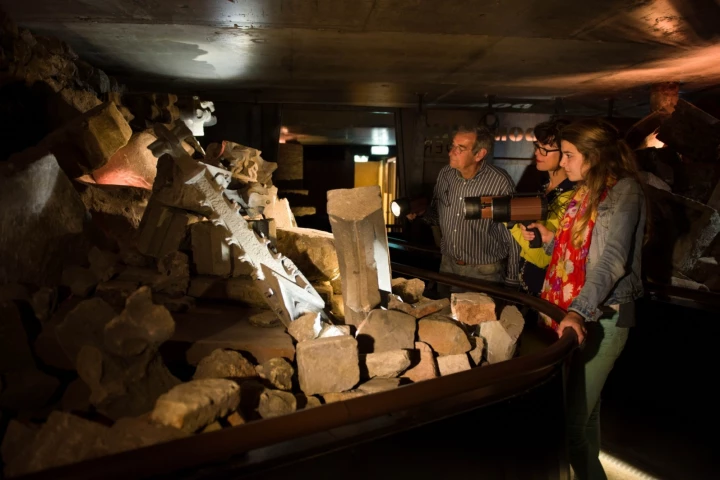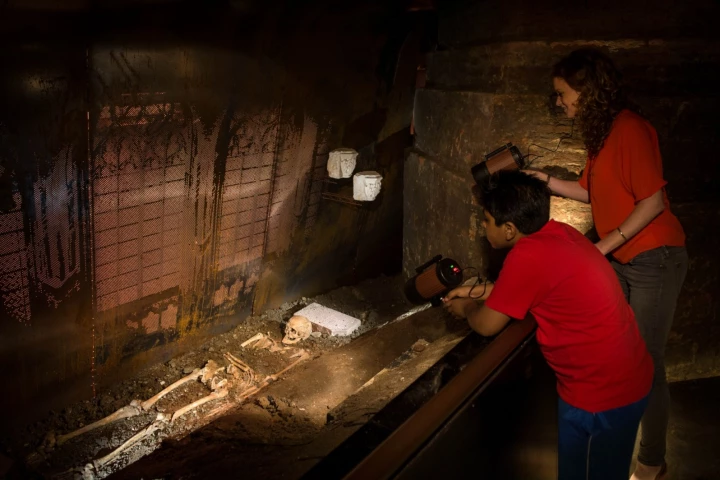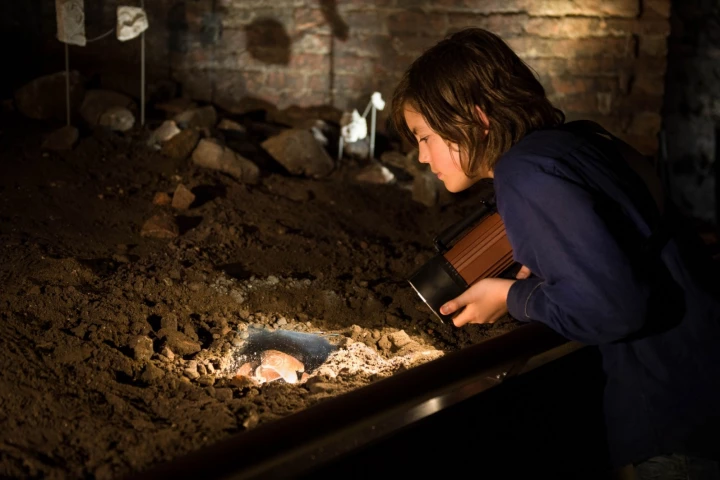we are experience designers
archaeological experience under the domplein square






On Monday 2 June the underground archaeological exhibition ‘DOMunder’ designed by Tinker imagineers opens in Utrecht. Nowhere else in the Netherlands is it possible to see and experience 20 centuries of history in one single location. Using an interactive torch, visitors will descend into the darkness and search for the remains that tell the stories of the Domplein square.
And there are plenty of them. Not just the story of the largest cathedral in the Netherlands that once stood here, to a tornado that blew down the nave in 1674, but also the remains of Roman forts, Willibrord’s settlement and various earlier churches that once stood on the Domplein square.
Tinker imagineers conceived and produced the visitor experience for the first excavation that can be visited in the Netherlands. By going underground with a torch they take on the role of the archaeologist. They discover in an investigative way the unlikely history of the square. When they light up foundations or an archaeological find, it triggers an explanation from the city archaeologist. He explains via an earpiece what the visitor is looking at.
In addition to this archaeological discovery tour that is mainly to stimulate curiosity, there is a multimedia descent in time. Using detailed 3D reconstructions of the Domplein square, visitors can go further back in time. They will be standing almost literally in the Gothic church and looking round the Roman Castellum.
A second audiovisual highlight is ‘the terrible tempest’ that occurs while the visitors are underground. The storm that destroyed the nave in 1674 once again rages across the square. The visitor can relive this historic storm with the aid of state of the art computer animations, light and sound effects.
All this takes place in the middle of archaeological discoveries, earthworks and foundations. In places where no archaeology is to be found Tinker have positioned walls of weathered steel with perforations which are back-lit. Perforations which show the main Roman building, for example, or Gothic stained glass windows can be lit from behind. This gives a beautiful, exciting effect and gives the excavations a more spacious character.